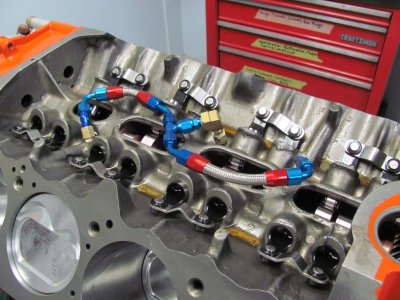Ian Robinson
Member
- Local time
- 5:06 PM
- Joined
- Oct 23, 2014
- Messages
- 5
- Reaction score
- 0
- Location
- Thunder Bay Ontario Canada
Want to convert to full time oiling to get rid of the potential #4 main and 6 & 7 rod bearing failures. Have Harlan Sharp rockers for my 500" low deck build but I know needle bearing rockers flow/pass more oil and require restrictors , be nice not to have to spend a year trying our different sizes.
Considered installing a restrictor in the stock oil feed at the block surface but would rather get rid of the problem, since I've experienced this with my and my friends big blocks.
Plan to run lines to the rear of thre rocker shafts from the main gallery at the back of the block.
Considered installing a restrictor in the stock oil feed at the block surface but would rather get rid of the problem, since I've experienced this with my and my friends big blocks.
Plan to run lines to the rear of thre rocker shafts from the main gallery at the back of the block.

















